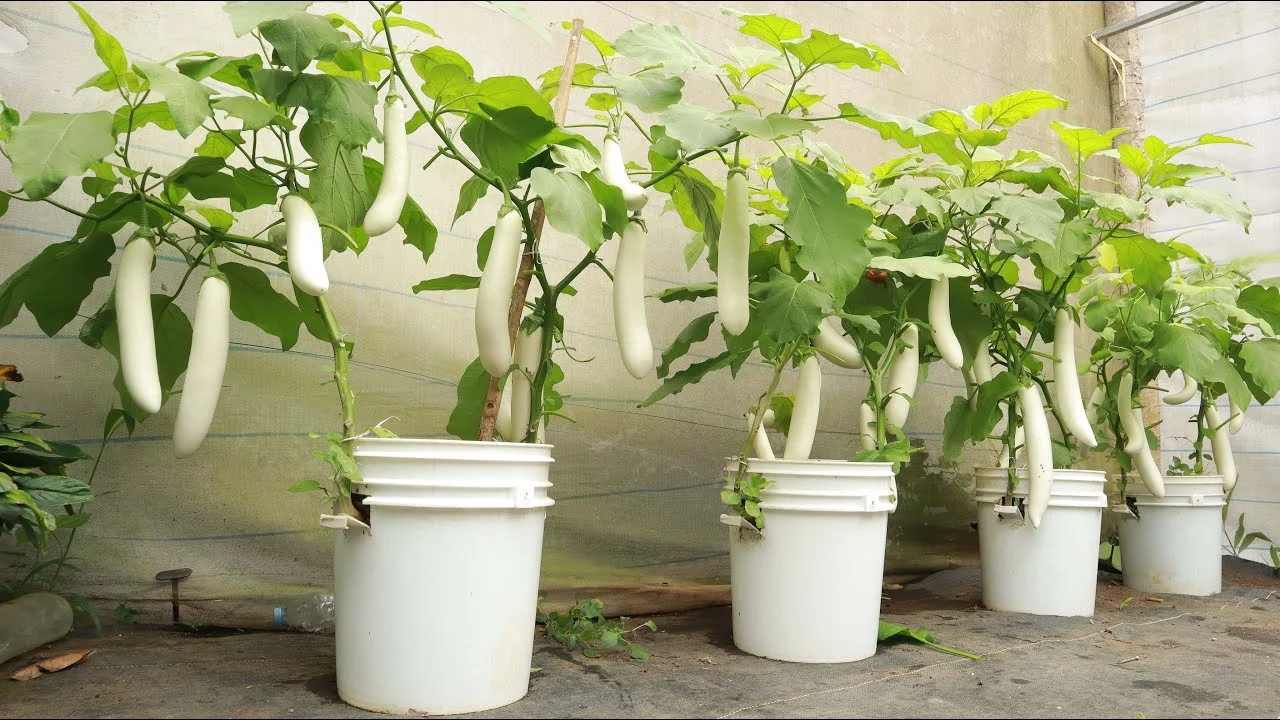How to Grow White Eggplant in a Pot: A Step-by-Step Guide
White eggplant is a unique and flavorful addition to any garden, and growing it in a pot is an excellent way to cultivate this vegetable in limited space. Follow this detailed guide to successfully grow and harvest white eggplant from the comfort of your home.
1. Choose the Right Variety
– Varieties: Select from varieties like ‘Snowy,’ ‘Ghostbuster,’ or ‘White Star,’ which are ideal for container gardening and produce glossy white fruits.
– Seed or Seedling:** Starting from seedlings is often easier and quicker for beginners. If starting from seeds, be prepared for a longer growing period.
2. Select an Appropriate Container
– Size of the Pot: Choose a pot that is at least 12-18 inches in diameter and 12 inches deep. This size ensures ample room for the roots and stability for the plant.
– Material and Drainage: Use containers made from plastic, clay, or ceramic with multiple drainage holes to prevent waterlogging and promote healthy root growth.
3. Prepare the SoiL
– Soil Type: Use a high-quality potting mix enriched with organic matter. Eggplants thrive in slightly acidic to neutral soil (pH 5.5-7.0).
– Add Compost: Incorporate compost or well-rotted manure into the soil to boost fertility and improve soil structure.
4.Plant the White Eggplant
– Seed Starting: For seeds, start indoors 6-8 weeks before the last frost date. Sow seeds about 1/4 inch deep in seed-starting trays or small pots. Maintain soil moisture and keep the temperature around 75-85°F (24-29°C) for optimal germination.
– Transplanting Seedlings: Once seedlings have 3-4 true leaves and the frost risk has passed, transplant them into the pot. Space them 18-24 inches apart if using a larger container for multiple plants.
5. Provide Adequate Light
– Sunlight Requirements: White eggplants need at least 6-8 hours of direct sunlight each day. Place the pot in a sunny location like a south-facing balcony, patio, or windowsill.
– Supplemental Lighting: For indoor growing, use grow lights to ensure the plants receive sufficient light for robust growth.
6. Watering and Feeding
– Watering Needs: Keep the soil evenly moist but not waterlogged. Allow the top inch of soil to dry out slightly between waterings. Avoid overwatering, which can lead to root rot, and underwatering, which may cause blossom drop.
– Fertilizing Schedule: Feed the plants with a balanced, water-soluble fertilizer every 3-4 weeks. Alternatively, use a slow-release granular fertilizer when planting.
7. Support the Plant
– Staking: As the plant grows and bears fruit, it may need support to prevent tipping. Use a stake or small cage to provide stability and promote upright growth.
– Pruning: Remove any damaged or yellowing leaves and suckers (small shoots at leaf axils) to enhance airflow and overall plant health.
8. Monitor for Pests and Diseases
– Common Pests: Watch for aphids, flea beetles, spider mites, and whiteflies. Manage infestations with insecticidal soap or neem oil.
– Disease Prevention: Ensure good air circulation around the plant to prevent fungal diseases like powdery mildew. Avoid overhead watering to minimize the risk of leaf diseases.
9. Harvest the White Eggplant
– Harvest Time: White eggplants are typically ready for harvest 70-80 days after planting. Pick the fruits when they are firm, glossy, and about 4-6 inches long.
– Regular Harvesting: Regular harvesting encourages more fruit production. Use scissors or pruning shears to cut the stem, leaving a small portion attached to the fruit.
10. Care After Harvest
– Continue Feeding: After the initial harvest, keep watering and fertilizing the plant to support ongoing fruit production.
– Monitor Growth: Watch for signs of nutrient deficiencies or stress, such as yellowing leaves or stunted growth, and adjust care as needed.
Conclusion
Growing white eggplant in a pot is a fantastic way to enjoy fresh, homegrown vegetables even with limited space. By selecting the right variety, providing proper soil and light, and maintaining consistent care, you can successfully cultivate and harvest this unique vegetable. With attention to detail, you’ll be able to enjoy the creamy texture and mild flavor of white eggplant in a variety of dishes, from grilling and roasting to frying. Happy gardening!
